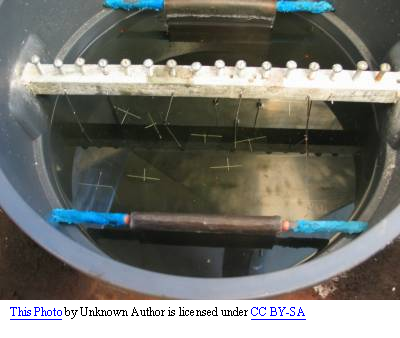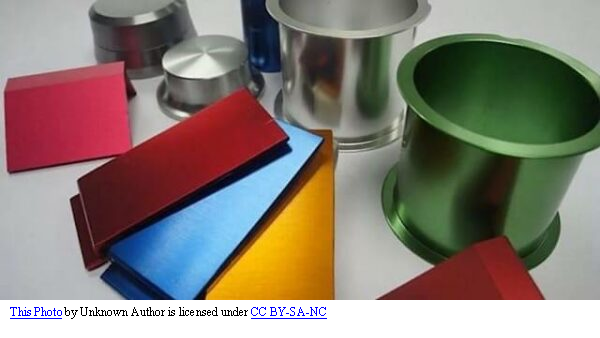For decades, the metal stamping industry has been using aluminum anodizing for various decorative finish purposes. However, you can never fully take advantage of a process without ample knowledge of it. Although the process seems simple—it involves an aluminum oxide coating on the surface of a product—it has many complexities to dig into.
This blog explores the whole aluminum anodizing process. It explains the step-by-step process with its variations, benefits, and limitations.
What is Aluminum Anodizing?
Before learning about aluminum anodizing, we must understand it. Anodizing is an electrochemical process. It’s the coating of a metal on the surface of another product. This coats the metal on some parts or the whole product. When the coating element is aluminum oxide, the process becomes “aluminum anodizing. The primary purpose of this process is to improve the wear resistance of the product.
How Does Aluminum Anodizing Work?
The aluminum anodizing process is quite simple but technical. The traditional aluminum anodizing process was quite simple. It used to operate on the principles of an electrolytic cell. The essential components of this process were:
- an electrolyte (mostly sulphuric acid)
- the product which needs to be anodized
- an aluminum or lead plate
For better results, the anodized product needed to be completely dipped inside the electrolyte. The whole process was carried out in an anodizing tank. The next step was to complete the circuit.
For this purpose, the anodizing product was given a positive charge, which made it act as an anode. The metal plate (aluminum, nickel, cobalt, titanium, etc.) was given a negative charge, which made it act as a cathode. The final step was passing the current.
The charge and amount of the electrical current are directly related to the quality and thickness of the metal’s coating.
Modern Process of Aluminum Anodizing
The modern process of aluminum anodizing is more technical than the previous one. It involves several steps. At the industry level, the process of anodized aluminum requires better quality. Let’s delve into each step individually and understand it step by step.
Use of acidic or alkaline cleaning agents
The first step of the anodizing process is cleansing the aluminum product that needs to be anodized. For this step, we use acidic or alkaline cleaning agents.
Making a Smooth finish or doing a Pre-treatment
Smoothing the product’s surface is better for the final perfect finish. This removes any imperfections on the surface. This step is essential to achieving ideal powder coating results. Brightening and etching are the two processes used for this purpose.
The brightening method involves using a concentrated mixture of nitric and phosphoric acid. This mixture removes any residual heavy metal from the product’s surface.
The etching method uses a hot solution of sodium hydroxide. It is preferred when the industry requires a matte finish on the product. Sodium hydroxide removes a complete layer of aluminum from the product’s surface.
Final Steps of Making Anodized Aluminum
The next step is anodizing, which is the same as explained before. Sulphuric acid is usually the most suitable acid for the purpose of an electrolyte, but other acids might also be used in some cases.
The final step of the process is sealing. The primary purpose of this step is to improve abrasion resistance. Several methods are used for the sealing process. These are:
- Hot method
- Cold method
- A combination of hot and cold methods.

Three Types of Aluminum Anodizing
Type I – Chromic AcidAnodizing
Chromic acid anodizing involves using chromic acid as an electrolyte. The rest of the process remains the same. When the electrolysis occurs, the chromic acid puts a thin layer of aluminum the aluminum surface of the product or substrate.
Type 1 Anodizing provides a minimal thickness of 0.00001″ to the product’s surface.
Type II – Sulfuric AcidAnodizing
When the electrolysis of the aluminum product is conducted inside a bath of sulfuric acid, it is termed sulfuric acid anodizing. In this anodizing process, sulfuric acid performs the role of an electrolyte. This is the most common type of aluminum anodizing. The aluminum oxide layer on the surface of the aluminum product makes the substrate abrasion-resistant.
Sulfuric acid anodizing provides moderate thickness through aluminum oxide coating.
Type III – Hard coat Anodizing
As the name suggests, the Type 3 or hard coat coating provides a dense, thick aluminum oxide layer. Also known as engineered anodizing, hard coat anodizing provides a thickness range of 0.0005″ to 0.0006″.
Although it uses sulfuric acid as an electrolyte, the process is carried out at low temperatures. The tank is refrigerated near the freezing point of water, and the sulfuric acid is also cooled to its freezing point. A high current voltage, i.e., 100V, is applied.
The primary purpose of hard coat anodizing is to form an anodized, extremely thick aluminum oxide layer that provides more abrasion resistance to the product.
Colors of Aluminum Anodized Coating
At the industrial level, the coloring of aluminum is a common phenomenon. The following two types are used to add color to anodized aluminum:
Type 1 – Electrocolouring
The first coloring technique is known as electrocoating. This technique is desirable for adding light and darker shades to anodized aluminum. The addition of inorganic metallic salts in the electrolyte helps in electro coloring, which can add colors such as black, brown, blue, etc.
Type 2- Dyeing
As the name suggests, this technique involves using dyes. These dyes penetrate into the pores of the anodized aluminum product. Dyeing is a beneficial technique because it adds an extra abrasive layer to the aluminum anodized product. This increases the wear resistance of the product, making it more durable. Also, the range of colors is wide, so you can use different colors for dyeing aluminum parts.

The Benefits of Aluminum Anodizing
A high-performing aluminum finish has several advantages. Let’s have a look at some of them:
Enhanced Durability
Typically, when exposed to an external environment, metallic products are prone to more damage and corrosion. The anodization of durable materials such as metals such as aluminum oxide makes them more durable and resistant to damage.
Perfect Finishing
When exposed to the external environment, anodized products are exposed to several threats, especially in industrial settings. These include scars caused by handling, installation, and dirt cleaning. The high-performing finish of aluminum anodized products makes such scars invisible. Simply cleaning with a cloth or using a cleaner can restore the original finish.
Aesthetically Pleasing
A unique feature of this anodizing process is that it maintains the metallic finish of the aluminum material. It also offers the addition of paint in a vast range of colors. The chances of color variations are almost extinct. This helps in the maintenance of an aesthetic appeal that comes in a variety of colors.
Affordable
The finishing and maintenance costs of aluminum anodized products are quite low. This makes them more affordable and, of course, desirable.
Safe
The whole anodizing process is nonhazardous. It complies with all health and safety standards. No harmful or toxic materials are used. The process is carried out in a controlled and safe environment. The final anodized finish does not decompose and is suitable for human use.
The Limitations of Aluminum Anodizing
Every process has some good and bad points. The aluminum anodizing process has its limitations, too. Following are some of the drawbacks of this process:
Size Limitations
The first limitation is the size of the product. The size of the aluminum product is directly proportional to the size of the anodizing tank or bath. Larger products will require larger baths or tanks, so this method is not suitable for huge objects.
Prone to Damage
Whatever safety you take or claim you make; the anodized layer is not invincible. Extremely rough usage can damage the external anodized layer. This damage can expose the inner aluminum layer to rust and corrosion. Extra care should be taken during handling and installation to ensure long-lasting performance and durability.
Rough Surface with Type 3 Anodizing
The finish is of extreme importance in this whole process. Only in rare cases might it not be desirable. However, the finish might lose its smoothness when using the type 3 anodizing coat process and the aluminum surface might become rough.
Dimensional Variations
The addition of aluminum oxide to the product’s surface might alter the coating thickness, which might cause a variation in the surface dimension. The variation would not be much. However, if a precise dimension is required, avoid this process.
Inconsistent Coloring
A major challenge in this process is achieving a uniform color. This process involves the use of different alloys, which have different proportions of aluminum metal. Therefore, the final results might be different.
Also, the coloring of different alloys might produce different results. The probability of color variations does exist.
Conclusion
Aluminum anodizing is a technical process with several advantages. Known for its corrosion resistance, it must still be handled with care. However, it is a resilient process. The durability of anodized products is expected to last between ten and twenty years. Furthermore, the availability of various colors increases the probability of usage across multiple industries.

